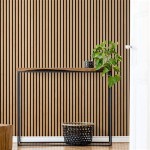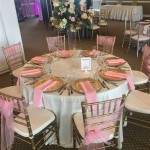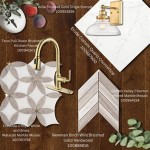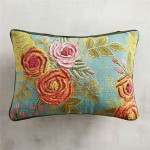Decorating A Cake With Flowers: A Comprehensive Guide
Decorating cakes with flowers elevates a simple dessert into an elegant centerpiece. This practice, while visually appealing, demands careful consideration of flower selection, preparation, and arrangement to ensure both aesthetic beauty and food safety. This article provides a detailed guide to decorating cakes with flowers, covering essential aspects from choosing the right blooms to executing safe and stunning designs.
Selecting Flowers for Cake Decoration: Safety and Suitability
The first and most crucial step in decorating a cake with flowers involves selecting flowers that are safe for contact with food. Not all flowers are edible or even non-toxic. Many commercially available flowers are treated with pesticides or other chemicals that can be harmful if ingested. Therefore, thorough research and a discerning selection process are paramount.
Edible flowers are the safest option for direct contact with cake surfaces. Examples include roses (specifically organically grown varieties), pansies, violas, calendula, nasturtiums, and certain types of herbs like chamomile and lavender. These flowers can be incorporated directly into the frosting or used as accents around the cake. It is essential to ensure that these flowers are sourced from reputable suppliers who guarantee their suitability for consumption and haven't used harmful chemicals during their cultivation.
Even when using edible flowers, moderation is key. Some individuals may have allergies to specific types of flowers. Furthermore, while the petals of many edible flowers are safe, other parts, such as the stems, pistils, and stamens, may be bitter or even slightly toxic. Therefore, it is generally recommended to use only the petals in decorating, removing the other parts before application.
If non-edible flowers are chosen for decoration, it's imperative to prevent direct contact between the flower and the cake. This can be achieved through several methods, including using floral picks, parchment paper barriers, or fondant discs as a protective layer. Flowers like hydrangeas, lilies of the valley, and daffodils are considered toxic and should never come into direct contact with the cake. These flowers can still be used for decoration, but strict precautions must be taken to ensure food safety.
Consider the color palette and overall aesthetic of the cake when selecting flowers. Flowers should complement the frosting color, cake flavor, and the occasion for which the cake is being made. For instance, pastel-colored roses and delicate blossoms might be suitable for a wedding cake, while bolder, brighter flowers might be more appropriate for a birthday celebration.
Preparing Flowers for Cake Decoration: Cleaning and Protection
Proper preparation of flowers is critical to ensure both the safety and longevity of the floral decorations on the cake. This process involves cleaning, hydrating, and protecting the flowers before they are incorporated into the design.
The first step is to gently clean the flowers. Even organically grown flowers may have accumulated dirt or debris during handling and transportation. Use cool, clean water to gently rinse the petals, taking care not to damage the delicate blooms. A soft brush can be used to remove any stubborn dirt. After rinsing, gently pat the flowers dry with a clean paper towel.
Hydration is crucial to keep the flowers fresh and vibrant for as long as possible. Cut the stems of the flowers at an angle and place them in a vase of cool water. Floral preservative can be added to the water to extend the life of the flowers. Allow the flowers to hydrate for several hours, or preferably overnight, before using them for decoration. This ensures that the flowers are fully turgid and less likely to wilt.
For non-edible flowers, additional protective measures are necessary. As previously mentioned, preventing direct contact between the flowers and the cake is paramount. One method involves wrapping the stems of the flowers with floral tape and then inserting them into floral picks. These picks create a barrier, preventing any sap or toxins from the flowers from leaching into the cake. Alternatively, the stems can be inserted into small vases or containers that are then placed on the cake. These containers can be disguised with frosting or other decorations.
Another approach is to create a barrier using fondant or parchment paper. Small discs of fondant or parchment paper can be placed between the flowers and the cake surface, providing a physical separation. This is particularly useful for flowers with large, flat surfaces that might otherwise come into direct contact with the frosting.
The timing of flower preparation is also important. Ideally, flowers should be prepared as close to the cake decoration time as possible. This minimizes the risk of wilting or damage. If flowers need to be prepared in advance, they should be stored in a cool, dark place, such as a refrigerator, until they are ready to be used.
Arranging Flowers on a Cake: Design Principles and Techniques
Arranging flowers on a cake is an art form that requires an understanding of design principles and techniques. The arrangement should be visually appealing, balanced, and appropriate for the overall style of the cake. Considerations include color, texture, size, and placement of the flowers.
The initial step involves planning the arrangement. Sketching out a rough design beforehand can be helpful in visualizing the final result. Consider the shape and size of the cake, the color and texture of the frosting, and the overall theme of the cake. A cascading arrangement, where flowers spill down the side of the cake, can create a dramatic effect. A more structured arrangement, with flowers placed in symmetrical patterns, can create a more formal look. A simple arrangement, with a few strategically placed flowers, can create an elegant and understated effect.
When arranging the flowers, start with the larger blooms and then fill in the gaps with smaller flowers and foliage. This creates a sense of depth and dimension. Varying the height and angle of the flowers can also add visual interest. Use floral wire or floral adhesive to secure the flowers in place, if necessary. Be careful not to damage the flowers during this process.
Consider incorporating other decorative elements, such as edible pearls, sprinkles, or fondant decorations, to complement the flowers. These elements can add texture, color, and sparkle to the cake. However, it is important to avoid overcrowding the cake. The flowers should be the focal point of the design, and other decorations should be used sparingly.
Balance is a crucial element in floral cake decoration. A balanced arrangement is visually pleasing and creates a sense of harmony. This can be achieved through symmetrical or asymmetrical arrangements. A symmetrical arrangement has an equal distribution of flowers on both sides of the cake, while an asymmetrical arrangement has an uneven distribution of flowers. Both types of arrangements can be beautiful, but it is important to consider the overall style of the cake when choosing an arrangement type.
The placement of flowers is also important. Flowers can be placed on top of the cake, around the base of the cake, or cascading down the sides of the cake. The placement of the flowers should complement the overall design of the cake and enhance its visual appeal. Consider the viewing angle of the cake. If the cake will be viewed from all sides, then the floral arrangement should be designed to be attractive from all angles. If the cake will be viewed from only one side, then the floral arrangement can be designed to be more focused on that side.
When arranging flowers on a cake, it is important to use a light touch. The flowers should be arranged in a way that looks natural and effortless. Avoid overcrowding the cake with too many flowers. A few carefully placed flowers can be more effective than a large, overwhelming arrangement. Regularly step back and view the cake from a distance to assess the overall balance and composition of the floral arrangement.
Cleanliness is important throughout the entire decorating process. Ensure that all tools and surfaces are clean and sanitized. This minimizes the risk of contamination and helps to maintain the freshness of the flowers. Furthermore, avoid touching the exposed cake surface with bare hands during the flower arrangement process. Use gloves or clean utensils to handle the flowers and other decorations.
Finally, consider the environmental conditions in which the cake will be displayed. High temperatures and humidity can cause the flowers to wilt quickly. If possible, store the cake in a cool, dry place until it is ready to be served. A light misting of water can help to keep the flowers fresh, but avoid over-watering, as this can damage the frosting.

How To Decorate A Cake With Fresh Flowers Blooms By The Box

Easy Ercream Flower Cake How To Make Flowers

Turquoise Fl Cake

Ercream Frosting

20 Beautiful Flower Birthday Cake Ideas Wilton S Baking Blog Recipes Decorating And Desserts

Ercream Flowers Cake Curly Girl Kitchen

Blooming Minimalist Fl Cake Wedding

20 Beautiful Flower Birthday Cake Ideas Wilton S Baking Blog Recipes Decorating And Desserts

Ercream Flower Cakes Are A Delicious Way To Welcome Spring

Cake A Rustic Chocolate With Fruit And Flowers








